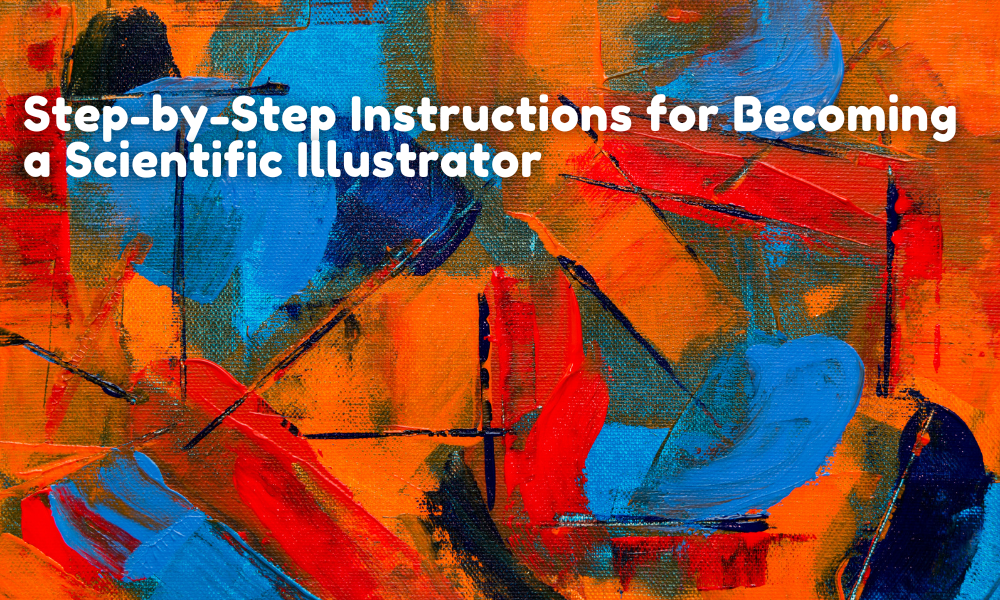What is a scientific illustrator?
A scientific illustrator is a specialist who produces artistic depictions of scientific concepts. These professionals blend expertise in science, technology, and art to create drawings, paintings, models, and other visual representations. Their work appears in various formats, such as:
- Books
Websites
Brochures
Educational materials
Scientific journals
Museum exhibits
Scientific illustrators may focus on specific fields, earning titles like medical illustrators or biological illustrators. Medical illustrators craft visuals showing body parts or disease processes for medical textbooks or educational models for medical institutions. Biological illustrators might design life-sized models of plants or animals for educational purposes in schools or museums.
What are the responsibilities of a scientific illustrator?
Scientific illustrators employ a range of technical and artistic techniques to produce images related to scientific topics. Their tasks often include:
- Studying scientific subjects.
- Observing natural elements like plants and animals, as well as other scientific phenomena.
- Utilizing artistic skills such as drawing, painting, sculpting, and sketching.
- Incorporating technology to develop animations and models.
- Creating depictions of living or extinct species based on research and educated guesses.
- Completing commissioned projects for clients or organizations.
How to become a scientific illustrator:
1. Obtain a degree
- Biology
- Anatomy and physiology
- Zoology
- Chemistry
- Microbiology
- Drawing and life drawing
- Painting
- Art theory
- Computer-assisted drawing
- Animation
- Graphic design
2. Acquire experience
To build experience in scientific illustration, consider undertaking an internship. This could be part of your undergraduate or graduate program, or you might need to seek out opportunities independently. Check with your school’s career center for companies that accept interns, or contact companies directly to inquire about available internships.
Volunteering can also help you gain experience. Reach out to the following places to ask about volunteer opportunities:
- Libraries
Schools
Museums
Recreation centers
Summer camps
Publishing companies
Advertising agencies
Post your services on job sites to attract freelance projects.
3. Build a portfolio
As an artistic professional, showcasing your work to potential employers is crucial. Create an online portfolio on a blog or website. Numerous free web hosting services offer templates and easy-to-follow guides to help you get started.
4. Network
Connect with professionals in your industry by attending:
- Social events
Conferences and workshops
Alumni activities
Additionally, participate in professional and interest groups online via social media platforms.
5. Job application process
When you’re prepared to seek employment, update your resume and emphasize relevant skills and experience tailored to each job application. Review the job description for keywords to integrate into your cover letter and resume, demonstrating alignment with the company’s requirements. Provide a link to your online portfolio.
Search for jobs through:
- Career centers
Industry publications
Job search platforms
Company websites and social media profiles
Tap into your personal and professional networks
6. Interview preparation
Once you secure an interview, follow these guidelines to ensure a successful performance:
- Conduct thorough research about the company in advance.
Practice answering typical questions, such as “Why are you interested in working here?”
Consider participating in a mock interview at your school’s career center or with a friend or family member.
Plan your journey to the interview location beforehand to account for traffic and parking.
Dress appropriately in professional attire.
Arrive punctually for the interview.
Send a thank-you message to your interviewer within a week to express gratitude for their time.
Skills required for a career as a scientific illustrator include:
1. Artistic proficiency: Scientific illustrators excel in art, possessing knowledge of color, perspective, shape, and various techniques for painting, drawing, and sketching.
2. Technical expertise: Scientific illustrators are proficient in using computer software and tools for drawing, modeling, and animation.
3. Observational acumen: Scientific illustrators are meticulous observers, adept at capturing intricate details to create accurate depictions of their subjects.
4. Creativity: Scientific illustrators harness their creativity to visualize and portray extinct animals or phenomena, often based on research and inference.
5. Manual dexterity: Scientific illustrators demonstrate strong hand-eye coordination and fine motor skills, crucial for precise work with small items and repetitive tasks.
6. Communication skills: Scientific illustrators effectively communicate with peers, grasp scientific terminology, and articulate their work clearly. They collaborate with diverse stakeholders to promote their illustrations effectively.




